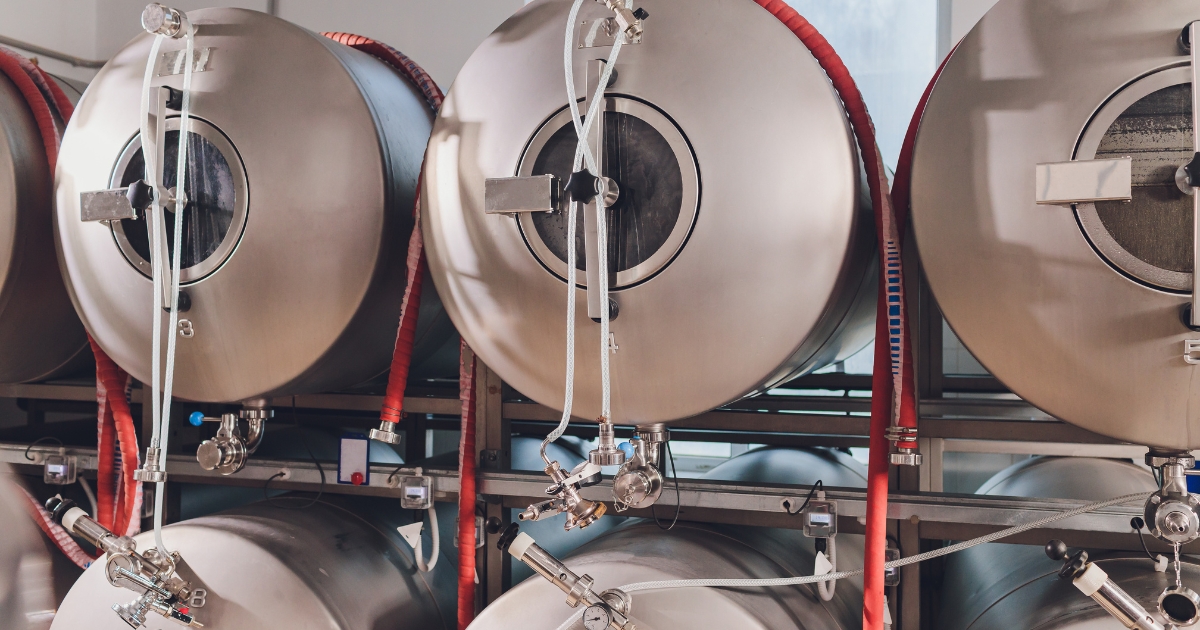A manufacturing process requires a lot of planning before it commences. The planning is required to see what’s coming, significantly if it impacts the business’s revenue. Capacity requirements planning is crucial for the manufacturing business as it clearly determines if the company can deliver orders. Businesses nowadays rely on CRP systems to ensure a strategic planning process with fewer errors. So better planning will increase revenue and improve customer satisfaction.
Understanding Capacity Requirements Planning
Capacity requirements planning is the process of determining if the company’s production capacity meets the production goals. It can also be referred to as CRP or capacity planning. This CRP system first analyses the company’s planned manufacturing schedule. Later, this method examines if the production schedule has the capability to meet the capacity in real.
If the company identifies the production capabilities to be insufficient, it will change its production goals to align it with the capacity. In addition, capacity planning conjointly works with materials requirement planning ensuring the company’s physical assets to meet manufacturing requirements.
Also Read : What is S&OP (Sales and operations planning) ?
Example of Capacity Requirement Planning
Assume that you are the retailer and the holiday festivities are fast approaching. You have to instantly create a plan based on the demand pattern. It means that you will have to consider various aspects.
The first step is to consider analysing the past season’s sales and compare it with the current market demand. After analysing the trend, reach out to the suppliers to get the resources you need to fulfil the demand.
Since it is a holiday festive season, you need to deeply analyse the labour. It is not uncommon to hire seasonal workers to handle the demand during that period.
In the final step, it is vital to track the items that are sold and the products that are warehoused. Tracking accurately will help in understanding the demand and restocking the products before they run out.
Steps of Capacity Requirements Planning
An important point to note here is that capacity planning depends on the accuracy of the data that is used for the planning process. If the company is still relying on spreadsheets or other disparate systems for data, the information they garner may not be accurate or updated. These data will not be of much use during the planning process.
On the contrary, if the company relies on automated software like an ERP system, accurate, relevant and updated information can be acquired which will be very helpful for the planning process. The software has the capability to extract data in real time.
When determining capacity requirements planning, the following steps must be followed–
1. Examine current capacity
In this step, various aspects have to be considered. Information should be collected regarding time studies. Further, live data should be collected regarding equipment capabilities. Other aspects like the number of hours and available shifts, absenteeism and supply chain variables such as vendor performance, lead times and inventory data should be analysed.
2. Create a robust demand plan
The development of a demand plan is crucial for capacity planning. Relying on supply chain management software will help in acquiring accurate data as it will allow aggregate demand planning, based on production time to calculate work centre capacity, find out bottlenecks in advance, analyse the what-if scenarios, master scheduling and others.
3. Decide on capacity modification requirements
The first two steps give you a clear understanding of capacity and demand. This step allows you to make adjustments in determining demand. Decide if additional shifts or overtime is needed. Analyse if certain production aspects have to be outsourced. So if you find the demand to be consistent, consider purchasing additional equipment.
Benefits of Capacity Requirements Planning
We have learned that capacity planning is the process of determining the resources required to meet the demand. Now, let us look at some of the benefits of the capacity planning process.
1. Stay prepared for different scenarios
A well-prepared capacity planning helps the business to be prepared for different scenarios. It will remove a lot of pressure and if you know the steps to be taken for each type of capacity, it will be easier to meet demand in any period.
2. Optimizes team bandwidth
Efficient capacity planning involves matching the skill sets and availability of your existing team with the requirements of upcoming projects. So, if there are insufficient resources for a particular project, you will get the insight to add more resources to your team. And as a business owner, it is crucial to understand your team’s skill sets. As a result, It has the potential to expedite staffing decisions and mitigate the risk of burnout.
3. Lowers production costs
Effectively managing your team’s capacity involves maximizing your resources to align with the scope of work that needs to be accomplished. So, you don’t have to pay for more resources than you require. which will eventually reduce production costs.
Assume, that there are 12 team members assigned to Project A, which requires only nine members, you have the flexibility to reassign three of those team members to Project B. This reallocation helps reduce expenses associated with Project A.
4. Future planning can become precise and simplified
Capacity planning is beneficial to understanding the capacity requirements for both current planning and future scope. Hence, if you create capacity planning for the current project, the same plan can be used for future projects. The template will serve as a valuable initial reference, eliminating the necessity to predict capacity needs from the beginning. This can streamline your team’s efforts by saving time and accelerating the capacity planning procedure.
5. Creates more transparency
With capacity planning, more inefficiencies can be highlighted which can be further optimized. The stakeholders can leverage this data to get a clear view which they can use to determine the ways they can invest their money and resources.
Types of Capacity Requirements Planning
Let’s learn more about the three types of capacity requirements planning :-
1. Workforce Capacity Planning
Workforce capacity planning pertains to the management of your human resources. In this type, the total hours to work on a project per week has to be figured out. To calculate the number, multiply the number of workers you have on the project by the number of hours they work per week.
Capacity planning for this can be computed using this formula:
(Workers) x (Shifts) x (Utilization) x (Efficiency)
2. Product Capacity Planning
The product capacity planning type is used to find out production capacity to meet the fluctuations regarding the demand for the product. This type of planning ensures that you have the right materials/resources in hand to respond to market demands. Plus, production capacity planning allows for any modifications when the demand changes.
3. Tool Capacity Planning
Tool capacity planning is one of the important types of capacity planning. It helps to forecast the resources required and assists with the allocation of resources at the right time. It means that this capacity planning ensures that you have the right resources and the correct amount of tools to complete your tasks. Tools used include assembly line parts, machinery etc.
Capacity Planning Strategies
Again, there are four types of capacity planning strategies which are enumerated below —
1. Lag Strategy
The lag strategy involves maintaining sufficient resources to fulfil current demand, disregarding projected demand estimates. This strategy is suitable for smaller organisations with low capacity requirements.
2. Lead Strategy
This strategy ensures that the business is having adequate resources to meet demand planning forecasts. Lead strategy is useful when there is excess demand as your extra capacity will help in meeting that demand.
3. Match Strategy
This strategy is a blend of lead and lag strategy. In this scenario, project managers need to monitor the actual demand, demand forecasts and market trends to adjust the capacity requirements accordingly.
4. Dynamic Strategy
In this type, the manufacturer analyses the sales forecast and actual demand. Later, he adds the capacity requirements. This strategy is safe, accurate and less risky.
Difference between Capacity Planning and Resource Planning
Capacity and resource planning are slightly different project planning strategies. CRP is the process of dealing with the supply and demand of your resources. The focus of capacity planning is to forecast and identify when there is an increase in the demand for the product and to be able to meet that demand. It ensures that the right amount of resources is available to meet the demand.
Resource planning deals with the materials you already have and helps in the correct allocation of resources in the business. Resource capacity planning also focuses on the anticipation of more resources in the future.
Capacity Requirements Planning Software
Automating capacity requirements planning will help in determining the actual production capacity and will provide assistance in adjusting the capacity to meet demands. Capacity requirements planning will offer the following benefits–
- It distinctly highlights operational bottlenecks in both the short and long terms, as well as potential alternative solutions.
- Real-time information and manual orders will help in fulfilling customer orders on time.
- It enhances production planning optimization.
Conclusion
Finally, capacity planning deals with predicting the expected consumer demands and making sure that the resources are available to meet those requirements. So as the business plans for capacity, it ensures that the right amount of resources is available to meet the current and future demand. For capacity management, inputs are taken from multiple roles of the business to develop an accurate capacity plan.






